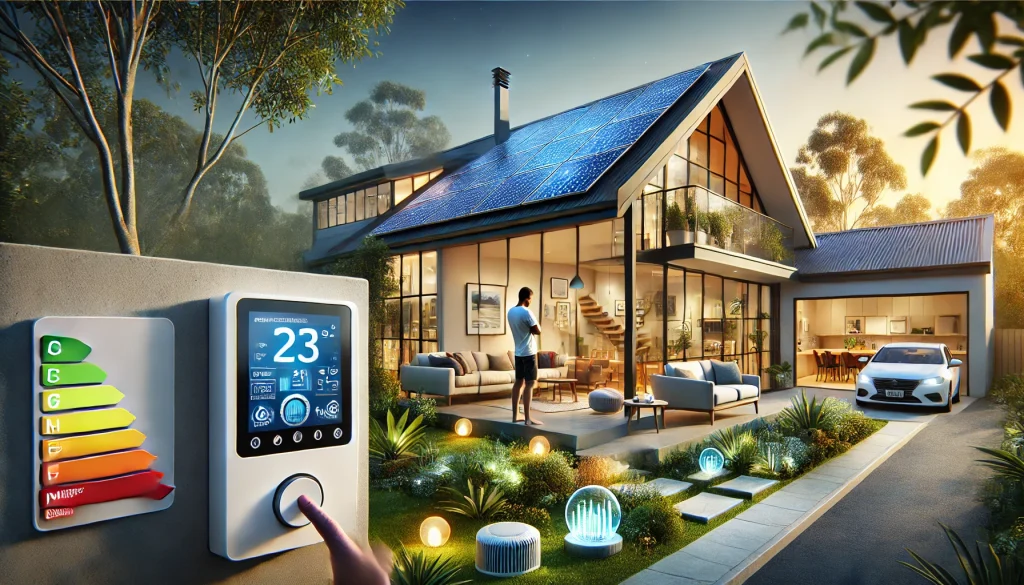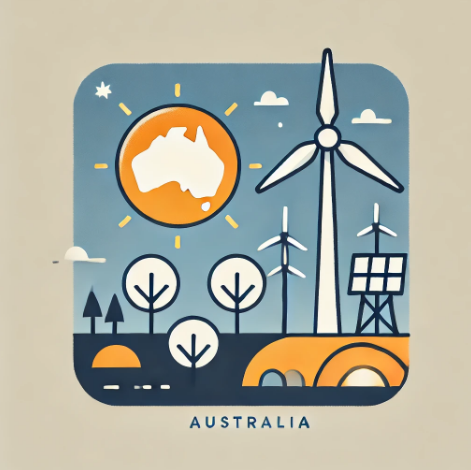In today’s world, energy-saving tips are more important than ever, especially in Australia, where rising energy bills and environmental challenges are pressing concerns. Understanding how simple changes can significantly reduce costs and help preserve the planet is crucial. By embracing strategies such as improving home insulation, investing in efficient appliances, and leveraging solar energy, Australians can foster a more sustainable future.
Energy conservation is not just about saving money; it’s a vital component of combating climate change. Australians face unique energy challenges, such as high electricity prices and a climate that demands extensive heating and cooling. Addressing these issues through smart energy practices can dramatically decrease household bills.
Understanding domestic energy consumption in Australia

Australia’s vast geography and varied climate zones mean that energy needs differ across the country. Factors such as home size, location, and the number of electronic devices can heavily influence energy bills. Understanding these factors is essential for identifying energy-saving tips tailored to your specific circumstances.
Typically, Australia’s households are known for significant energy use, largely because of the country’s reliance on air conditioning and heating. Location plays a vital role, with different regions demanding various levels of energy for climate control. The average home energy consumption is notably impacted by these elements.
Data suggests that by addressing key consumption areas—such as heating, cooling, and appliance use—considerable savings can be achieved. Initiatives like choosing energy-efficient appliances or improving home insulation can make a noticeable difference in annual energy costs.
Heating and cooling efficiency
One of the most effective energy-saving tips involves managing heating and cooling systems. In Australian homes, adjusting air-conditioning units to a slightly higher temperature in summer and heaters to a lower setting in winter can lead to significant savings. Even a small change in thermostat settings can result in a reduction in energy use.
Furthermore, regularly maintaining these systems improves their efficiency, prolonging their lifespan and saving energy. Dusty filters and ducts can cause HVAC systems to work harder, consuming more electricity. Routine checks and clean-ups not only save money but also enhance the indoor climate by fostering cleaner air, which is a crucial aspect of holistic energy-saving strategies in Australian households.
Investing in Wi-Fi-enabled thermostats also offers precision control over home temperatures. These smart devices allow users to program heating and cooling based on occupancy patterns, ensuring no energy is wasted heating or cooling an empty house.
Unplugging and smart appliance choices
A significant but often overlooked energy-saving tip is to unplug electronics when not in use. Many appliances continue to draw power even when turned off, known as “phantom loads.” By simply unplugging devices or using power strips to cut off power supply completely, households can prevent unnecessary energy drain and trim down their electricity bills effectively. Investing in energy-efficient appliances is another key strategy.
Appliances with high energy ratings tend to consume less electricity and perform better. When replacing old appliances, look for models that incorporate the latest energy-saving technologies. According to Energy.gov.au, choosing high-efficiency appliances can significantly lower annual electricity costs. Replacing traditional incandescent bulbs with LED lighting is an easy upgrade with immediate energy-saving benefits. LEDs consume significantly less power and have longer service lives, reducing the frequency of replacements.
Improving home insulation and sealing
One of the most effective ways to lower energy use is by improving your home’s insulation and sealing. Australian weather can be extreme, with hot summers and chilly winters, necessitating effective insulation to maintain comfort without overusing energy systems.
Ensuring that doors and windows are well-sealed is crucial. Drafts can significantly undermine heating and cooling efforts, leading to increased use of energy. Simple actions like weather-stripping doors and using window film kits can substantially reduce drafts, immediately enhancing your home’s energy efficiency.
Additionally, adopting thermal curtains and using door snakes can keep temperatures stable, cutting down the need for constant HVAC system adjustments. Applying such energy-saving tips turns your home into an energy-efficient sanctuary, resulting in lower consumption and a smaller carbon footprint.
Exploring solar energy solutions
The abundance of sunlight across Australia makes solar energy an attractive option for homeowners looking to cut energy costs sustainably. Installing solar panels allows homes to harness the sun’s power, significantly reducing dependency on traditional grid electricity.
Programs such as solar rebates and feed-in tariffs reward those who invest in solar energy, lowering the long-term costs of installation. Additionally, solar energy is not only cost-effective but also environmentally friendly, catering to a growing demand for renewable energy sources.
If you are considering solar panels for your home, you can explore Zienic Australia’s solutions for affordable and efficient energy options. Effective energy storage solutions, such as solar batteries, further enhance the benefits of going solar. Storing excess energy generated during sunny days ensures that power is available even during grid outages or nighttime.
Smart monitoring of energy usage
Energy monitoring devices provide significant insights into how much power is being consumed and which appliances or systems contribute most to the total. Installing smart meters allows households to track their energy usage in real-time, fostering informed decisions about energy management.
These devices reveal consumption patterns and peak usage times, presenting opportunities to reduce energy waist by switching off devices during these periods. In conclusion, recognising the impact of each energy decision is paramount for both economic benefits and environmental considerations.



